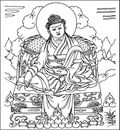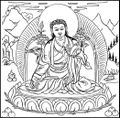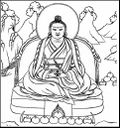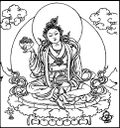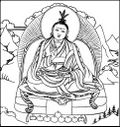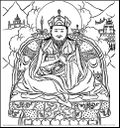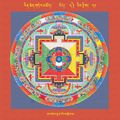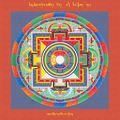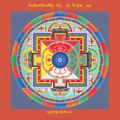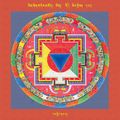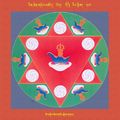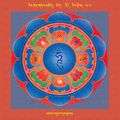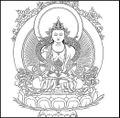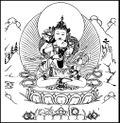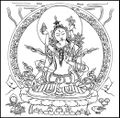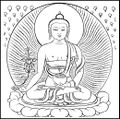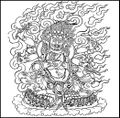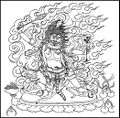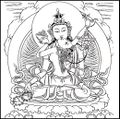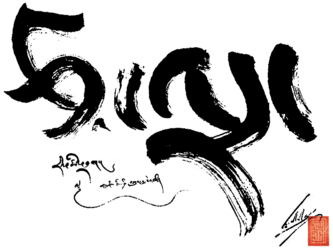Main Page
This website represents a searchable catalog of all texts in the རིན་ཆེན་གཏེར་མཛོད་ཆེན་མོ། and includes full unicode Tibetan texts with metadata, as well pdf files of the texts as they appear in the Shechen Edition.
The Rinchen Terdzö Chenmo is the largest of the Five Treasuries that Jamgön Kongtrul the Great ('jam mgon kong sprul blo gros mtha' yas, 1813-1899) compiled throughout his life. This extraordinary collection is comprised of the main Rediscovered Treasures (gter ma) of Tibetan Buddhism and the texts necessary to bestow the related empowerments and explanations to practice them. Jamyang Khyentse Wangpo traveled for thirteen years throughout Central and Eastern Tibet in order to collect the texts and receive the transmissions for the many lineages that had become almost extinct and held by only a few people. The actual redaction and editing of the Rinchen Terdzö was accomplished by Jamgön Kongtrul at the monastery-hermitage of Dzongshö Deshek Dupa, a secluded mountain retreat located between Dzongsar and Kathok, where Khyentse Wangpo had revealed a set of termas related to the Eight Herukas (grub pa bka' brgyad). Wooden-blocks were then carved at Palpung Monastery creating a 60-volume edition. From this edition, another set of wooden-blocks was carved at Tsurphu Monastery with three additional volumes. These three included the 'dod 'jo'i bum bzang, which was compiled by Minling Terchen Gyurme Dorje (1646-1714) and is considered to be the "seed" of the Rinchen Terdzö, the autobiography of Jamgön Kongtrul, and the root text of Chogyur Lingpa’s Lamrim Yeshe Nyingpo with a detailed commentary by Jamgön Kongtrul.
During his lifetime, Kyabje Dilgo Khyentse Rinpoche (1910-1991) gave the transmission of the Rinchen Terdzö five times and had the collection reprinted in India. In this 1976-1980 “Thimphu Edition” Khyentse Rinpoche included the four-volume manual written by the XVth Karmapa, Khakhyap Dorje (1871-1922), with information and complementary texts that are indispensable for giving the numerous empowerments (around 1700) found in the Rinchen Terdzod. He also included a few volumes that, according to the indications given by Jamgon Kongtrul himself, should have been added to the original collection. These are Chogyur Lingpa's Dzogchen Desum, Jamyang Khyentse Wangpo's Tsasum Osel Nyingthig, and Jedrung Trinley Jampa Jungney's Pema Sangthig. Dilgo Khyentse Rinpoche himself gathered three volumes of supplementary texts to be inserted at the appropriate places in the collection. These contain lineage prayers, texts for giving empowerments, manuals for recitation practice, and so on.
Thus, this edition consisted of 70 volumes. It was printed in Delhi, India, by Khyentse Rinpoche’s treasurer, Lama Ngodrup, and his team. It was published thanks to the matchless support of E. Gene Smith and the United States Library of Congress. Since the Library of Congress did not commission volumes containing more than 600 pages, the Thimphu Edition was skillfully divided into 111 volumes for use in foreign libraries, and re-arranged into the original 70 volumes for the use of monasteries. Five hundred sets were distributed by Khyentse Rinpoche - more than half for free - to monasteries, lamas, and practitioners. The transmission of the whole cycle of these teachings could then be given on several occasions to thousands of lineage holders and disciples. This collection is in nearly thirty university libraries throughout the world. At the outset, Dilgo Khyentse Rinpoche had wanted to use prints from the original Palpung edition. However, only one set of prints of this edition existed outside Tibet, at the Institute of Tibetology in Sikkim, and at that time it was not available for reproduction. Therefore, Khyentse Rinpoche used the Tsurphu edition, which was available in India. Since many of the prints of this edition were not clear enough for direct reproduction by photo-offset a group of Tibetan and Bhutanese copyists traced most of the volumes using semi-transparent tracing paper that created some additional mistakes. Consequently, the edition was not up to the standard that Khyentse Rinpoche had wanted to achieve, even though it served a most beneficial purpose. This edition has been out of print for more than ten years.
We, therefore, felt that it would be an appropriate fulfillment of Khyentse Rinpoche’s vision to prepare a new edition based on the Palpung prints. We used a reproduction of a set of Palpung prints kept in the Nyakrong province of Kham in Eastern Tibet. For the last 30 volumes, we also used an additional set of scans of the Palpung prints that we made at the Namgyal Institute Library in Sikkim thanks to the kind permission of its director, Burmiok Rinpoche. We also used an original set of prints of the Tsurphu edition. Our new edition includes 71 volumes of text and 1 volume of drawings (dpe’u ris).
The main challenge of such a project is indeed the proofreading of the texts, which is a never-ending task. Each volume was inputted twice by two different typists and the two versions were compared electronically to highlight the smallest difference between the inputs, thus eliminating practically all typing mistakes. However, occasionally both typists may have read incorrectly the same unclear sections of the wooden-block prints.
Another difficulty was that the original Palpung edition that we used for input had many mistakes created during the many steps involved in the preparation of the texts themselves and of the wooden blocks. Occasionally, whole paragraphs were missing. We, therefore, did a word-to-word comparison with the Tsurphu edition, which eventually turned out to be more correct, since it was proofread under the direction of the XVth Karmapa, Khakyap Dorje.
Then followed a ten-year process of careful, in-depth proofreading carried out by Ven. Dagpo Tulku Rinpoche at Shechen Pema Ösel Ling retreat center, at Namo Buddha and at Shechen monastery, both in Nepal.
We must pay a very special homage to Dagpo Rinpoche for tirelessly tracking down mistakes, omissions and other inconsistencies, comparing existing editions and going back to the original sources for the various termas included in the Great Treasury. In many cases, Dagpo Rinpoche spent over a month on a single volume. This edition could never have come into existence without his invaluable expertise and dedication. Tsewang Rigzin faithfully assisted Dagpo Rinpoche in his work over all these years.
We also warmly thank all those who worked very hard for the double input, comparison and checking of the 71 volumes: Tulku Rigzin Pema, who did a first round of proofreading, Lopön Samten Dorje, Sonam Wangpo, Ugyen Phuntsok, the late Tenzin Gyaltsen, Pema Tsechok Dorje, Do-ngak Tenzin, Karma Tenzin, Tenzin Wangpo, as well as the Khenpos and Lopöns of Shechen Philosophical College.
Konchog Lhadrepa, the head master of Shechen Tsering Art School, skillfully drew the illustrations and the calligraphy for the Dakini scripts. In particular, he prepared a new set of drawings for over one hundred large size yantras and chakras, which have now been included in the Rinchen Terdzod collection, for the first time.
Samdrup Tshering, in charge of Shechen Publications, has been responsible for all the printing work in Delhi, which he carried out in the best possible way.
Tony Duff kindly provided the TibetDoc software that has been essential for realizing this work.
We are immensely grateful for the generous and continued support of the Tsadra Foundation, which fully sponsored the input, proofreading, and printing of this new edition.
Thus, it is a great joy for us to present this new Shechen Edition of the Great Treasury of Rediscovered Teachings. May its merit be dedicated to the benefit of all sentient beings, to the perpetuation of the Dharma, which is the source of all temporary and ultimate happiness, to the long life and compassionate activities of all the great holders of the Buddha’s teachings, and especially to the flourishing of the beneficial activities of the reincarnation of Kyabje Dilgo Khyentse Rinpoche, Yangsi Rinpoche, Ugyen Tenzin Jigme Lhundrup, and of Kyapje Shechen Rabjam VII, Shedrup Chökyi Senge.
Shechen Monastery, Kathmandu, February 2016.

